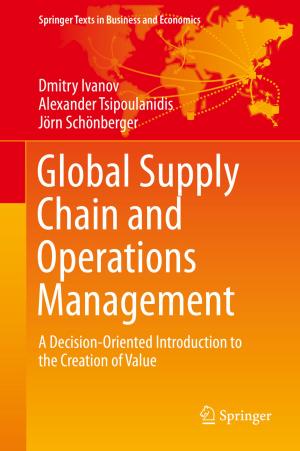Prominent Feature Extraction for Sentiment Analysis
Nonfiction, Health & Well Being, Medical, Specialties, Internal Medicine, Neuroscience, Computers, Advanced Computing, Science & Nature, Science| Author: | Basant Agarwal, Namita Mittal | ISBN: | 9783319253435 |
| Publisher: | Springer International Publishing | Publication: | December 14, 2015 |
| Imprint: | Springer | Language: | English |
| Author: | Basant Agarwal, Namita Mittal |
| ISBN: | 9783319253435 |
| Publisher: | Springer International Publishing |
| Publication: | December 14, 2015 |
| Imprint: | Springer |
| Language: | English |
The objective of this monograph is to improve the performance of the sentiment analysis model by incorporating the semantic, syntactic and common-sense knowledge. This book proposes a novel semantic concept extraction approach that uses dependency relations between words to extract the features from the text. Proposed approach combines the semantic and common-sense knowledge for the better understanding of the text. In addition, the book aims to extract prominent features from the unstructured text by eliminating the noisy, irrelevant and redundant features. Readers will also discover a proposed method for efficient dimensionality reduction to alleviate the data sparseness problem being faced by machine learning model.
Authors pay attention to the four main findings of the book :
-Performance of the sentiment analysis can be improved by reducing the redundancy among the features. Experimental results show that minimum Redundancy Maximum Relevance (mRMR) feature selection technique improves the performance of the sentiment analysis by eliminating the redundant features.
- Boolean Multinomial Naive Bayes (BMNB) machine learning algorithm with mRMR feature selection technique performs better than Support Vector Machine (SVM) classifier for sentiment analysis.
- The problem of data sparseness is alleviated by semantic clustering of features, which in turn improves the performance of the sentiment analysis.
- Semantic relations among the words in the text have useful cues for sentiment analysis. Common-sense knowledge in form of ConceptNet ontology acquires knowledge, which provides a better understanding of the text that improves the performance of the sentiment analysis.
The objective of this monograph is to improve the performance of the sentiment analysis model by incorporating the semantic, syntactic and common-sense knowledge. This book proposes a novel semantic concept extraction approach that uses dependency relations between words to extract the features from the text. Proposed approach combines the semantic and common-sense knowledge for the better understanding of the text. In addition, the book aims to extract prominent features from the unstructured text by eliminating the noisy, irrelevant and redundant features. Readers will also discover a proposed method for efficient dimensionality reduction to alleviate the data sparseness problem being faced by machine learning model.
Authors pay attention to the four main findings of the book :
-Performance of the sentiment analysis can be improved by reducing the redundancy among the features. Experimental results show that minimum Redundancy Maximum Relevance (mRMR) feature selection technique improves the performance of the sentiment analysis by eliminating the redundant features.
- Boolean Multinomial Naive Bayes (BMNB) machine learning algorithm with mRMR feature selection technique performs better than Support Vector Machine (SVM) classifier for sentiment analysis.
- The problem of data sparseness is alleviated by semantic clustering of features, which in turn improves the performance of the sentiment analysis.
- Semantic relations among the words in the text have useful cues for sentiment analysis. Common-sense knowledge in form of ConceptNet ontology acquires knowledge, which provides a better understanding of the text that improves the performance of the sentiment analysis.















